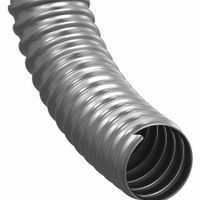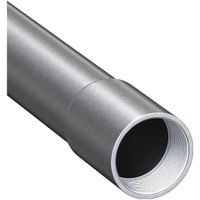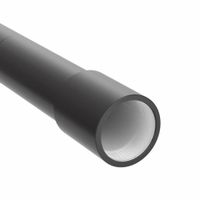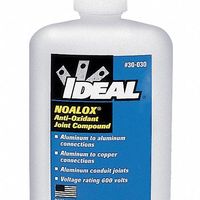Call +(254) 703 030 000 / 751 483 999 / 721 704 777
- Home
- Electrical
- Conduit Fittings Strut Channel Framing
- Conduit Fittings
.....Read More
Frequently Asked Questions
What are the different types of conduit and their uses?
1. **Rigid Metal Conduit (RMC):** Made of steel or aluminum, RMC is thick-walled and provides excellent protection against physical damage. It's used in industrial and commercial applications, especially where high security is needed.
2. **Intermediate Metal Conduit (IMC):** Lighter and thinner than RMC, IMC is also made of steel. It's used in similar applications as RMC but is easier to handle and install, making it suitable for both indoor and outdoor use.
3. **Electrical Metallic Tubing (EMT):** Often called "thin-wall," EMT is made of galvanized steel or aluminum. It's lightweight and easy to bend, making it ideal for indoor applications in residential and commercial buildings.
4. **Flexible Metal Conduit (FMC):** Made of helically wound, interlocked metal strips, FMC is flexible and used in areas requiring movement or vibration, such as connections to motors or lighting fixtures.
5. **Liquid-tight Flexible Metal Conduit (LFMC):** Similar to FMC but with a plastic coating, LFMC is used in wet or corrosive environments, providing both flexibility and moisture resistance.
6. **Rigid PVC Conduit:** Made of polyvinyl chloride, this non-metallic conduit is lightweight, corrosion-resistant, and used in underground or wet locations. It's suitable for direct burial and concrete encasement.
7. **Electrical Nonmetallic Tubing (ENT):** A flexible, corrugated plastic conduit, ENT is used in walls, floors, and ceilings, particularly in residential and light commercial applications.
8. **Liquid-tight Flexible Nonmetallic Conduit (LFNC):** Made of a flexible plastic material, LFNC is used in wet, corrosive, or outdoor environments where flexibility is needed.
9. **Aluminum Conduit:** Lightweight and corrosion-resistant, aluminum conduit is used in areas where steel conduits might corrode, such as coastal regions.
10. **Fiberglass Conduit:** Known for its high strength and corrosion resistance, fiberglass conduit is used in environments with extreme temperatures or chemical exposure.
How do you choose the right conduit for a specific application?
To choose the right conduit for a specific application, consider the following factors:
1. **Environment**: Assess the installation environment. For outdoor or wet locations, use weather-resistant conduits like PVC or galvanized steel. For corrosive environments, consider stainless steel or PVC-coated conduits.
2. **Material**: Select the conduit material based on durability and flexibility needs. Metal conduits (e.g., EMT, RMC) offer strength and grounding capabilities, while non-metallic conduits (e.g., PVC, HDPE) provide corrosion resistance and are lightweight.
3. **Size**: Determine the conduit size based on the number and size of wires to be housed. Follow the National Electrical Code (NEC) or local regulations for fill capacity to ensure safety and compliance.
4. **Temperature**: Consider temperature ratings. Metal conduits handle high temperatures better, while PVC may be suitable for moderate temperatures.
5. **Flexibility**: For applications requiring bends or movement, use flexible conduits like FMC or LFMC. Rigid conduits are better for straight runs and structural support.
6. **Cost**: Balance cost with performance. PVC is generally more affordable, while metal conduits offer higher durability at a higher price.
7. **Installation**: Consider ease of installation. PVC is easier to cut and join, while metal conduits require more tools and expertise.
8. **Regulations**: Ensure compliance with local building codes and standards, which may dictate specific conduit types for certain applications.
9. **Aesthetics**: For visible installations, consider the appearance. Metal conduits may offer a more polished look compared to PVC.
10. **Fire Resistance**: In fire-prone areas, use conduits with high fire resistance, such as metal conduits.
By evaluating these factors, you can select the most appropriate conduit for your specific application, ensuring safety, compliance, and efficiency.
What are the advantages of using metallic conduit over PVC conduit?
Metallic conduits offer several advantages over PVC conduits:
1. **Durability and Strength**: Metallic conduits, such as those made from steel or aluminum, are more robust and can withstand physical impacts better than PVC. This makes them ideal for environments where mechanical protection is crucial.
2. **Fire Resistance**: Metal conduits are non-combustible and can withstand high temperatures, providing better fire resistance compared to PVC, which can melt or emit toxic fumes when exposed to fire.
3. **Grounding**: Metallic conduits can serve as a grounding path, which enhances electrical safety by reducing the risk of electric shock and ensuring proper operation of circuit protection devices.
4. **EMI Shielding**: Metal conduits offer excellent electromagnetic interference (EMI) shielding, protecting sensitive electronic equipment from external electromagnetic fields and preventing signal interference.
5. **Longevity**: Metal conduits generally have a longer lifespan, especially in outdoor or industrial environments, as they are less susceptible to UV degradation and chemical exposure compared to PVC.
6. **Temperature Tolerance**: Metal conduits can handle a wider range of temperatures without becoming brittle or soft, making them suitable for extreme temperature conditions.
7. **Pest Resistance**: Unlike PVC, metal conduits are not susceptible to damage from rodents or insects, which can chew through plastic materials.
8. **Aesthetic and Structural Integrity**: Metal conduits can provide a more professional and industrial appearance, and they maintain their structural integrity over time without sagging or warping.
9. **Code Compliance**: In certain jurisdictions and applications, metallic conduits may be required by building codes for specific installations, particularly in commercial or industrial settings.
These advantages make metallic conduits a preferred choice in many applications, despite their higher cost and weight compared to PVC.
How do you properly install conduit and fittings?
To properly install conduit and fittings, follow these steps:
1. **Plan the Layout**: Determine the path for the conduit, ensuring it is the shortest and most efficient route. Consider obstacles and ensure compliance with local electrical codes.
2. **Select Conduit Type**: Choose the appropriate conduit type (e.g., PVC, EMT, Rigid Metal) based on the environment and application.
3. **Measure and Cut**: Measure the required length of conduit. Use a conduit cutter or hacksaw to cut the conduit to size. Deburr the edges to prevent wire damage.
4. **Install Conduit Supports**: Secure conduit supports (straps or hangers) along the path, typically every 3-5 feet, and within 3 feet of each junction box or fitting.
5. **Bend Conduit**: Use a conduit bender to make necessary bends, ensuring smooth curves to avoid damaging wires.
6. **Assemble Conduit Sections**: Connect conduit sections using appropriate fittings (couplings, connectors). For metal conduits, ensure proper grounding. For PVC, use solvent cement for a secure bond.
7. **Install Junction Boxes**: Place junction boxes at points where wires will be spliced or redirected. Secure them firmly to the structure.
8. **Pull Wires**: Use fish tape to pull wires through the conduit. Ensure wires are rated for the conduit type and environment.
9. **Make Connections**: Connect wires inside junction boxes using wire nuts or terminal blocks. Label wires for easy identification.
10. **Inspect and Test**: Check the installation for compliance with electrical codes. Test the system for continuity and proper grounding.
11. **Secure and Seal**: Tighten all fittings and ensure all connections are secure. Seal any openings to prevent moisture ingress.
12. **Final Inspection**: Conduct a final inspection to ensure the installation is safe and functional.
What are the common sizes and dimensions of conduit?
Conduits are available in various sizes and dimensions to accommodate different types of wiring and installation requirements. The most common types of conduits include Electrical Metallic Tubing (EMT), Rigid Metal Conduit (RMC), Intermediate Metal Conduit (IMC), and Polyvinyl Chloride (PVC) conduit. Here are the typical sizes and dimensions:
1. **Electrical Metallic Tubing (EMT):**
- Sizes range from 1/2 inch to 4 inches in diameter.
- Common sizes include 1/2 inch, 3/4 inch, 1 inch, 1 1/4 inches, 1 1/2 inches, 2 inches, 2 1/2 inches, 3 inches, and 4 inches.
2. **Rigid Metal Conduit (RMC):**
- Sizes range from 1/2 inch to 6 inches in diameter.
- Common sizes include 1/2 inch, 3/4 inch, 1 inch, 1 1/4 inches, 1 1/2 inches, 2 inches, 2 1/2 inches, 3 inches, 3 1/2 inches, 4 inches, 5 inches, and 6 inches.
3. **Intermediate Metal Conduit (IMC):**
- Sizes range from 1/2 inch to 4 inches in diameter.
- Common sizes include 1/2 inch, 3/4 inch, 1 inch, 1 1/4 inches, 1 1/2 inches, 2 inches, 2 1/2 inches, 3 inches, and 4 inches.
4. **Polyvinyl Chloride (PVC) Conduit:**
- Sizes range from 1/2 inch to 6 inches in diameter.
- Common sizes include 1/2 inch, 3/4 inch, 1 inch, 1 1/4 inches, 1 1/2 inches, 2 inches, 2 1/2 inches, 3 inches, 3 1/2 inches, 4 inches, 5 inches, and 6 inches.
These conduits are typically available in standard lengths of 10 feet or 20 feet, depending on the material and application. The choice of conduit size depends on the number and size of wires to be enclosed, as well as the specific requirements of the electrical installation.
How do you ensure conduit and fittings are sealed against moisture and corrosion?
To ensure conduit and fittings are sealed against moisture and corrosion, follow these steps:
1. **Material Selection**: Choose corrosion-resistant materials like PVC, stainless steel, or galvanized steel for conduits and fittings. These materials inherently resist moisture and corrosion.
2. **Proper Installation**: Ensure conduits are installed with a slight slope to prevent water accumulation. Use appropriate tools to avoid damaging the protective coatings during installation.
3. **Sealing Joints**: Use watertight fittings and connectors. Apply thread sealant or Teflon tape on threaded connections to prevent moisture ingress. For non-threaded connections, use appropriate sealing compounds or gaskets.
4. **Conduit Coatings**: Apply protective coatings such as epoxy or polyurethane on metal conduits to enhance corrosion resistance. For PVC conduits, ensure they are UV-resistant if exposed to sunlight.
5. **Use of Gaskets**: Install rubber or silicone gaskets in junction boxes and enclosures to create a watertight seal. Ensure gaskets are properly seated and in good condition.
6. **Weatherproof Enclosures**: Use NEMA-rated or IP-rated enclosures for outdoor or wet environments. These ratings indicate the level of protection against moisture and dust.
7. **Drainage and Ventilation**: Install drain fittings at low points to allow moisture to escape. Ensure adequate ventilation to prevent condensation inside conduits.
8. **Regular Maintenance**: Inspect conduits and fittings regularly for signs of wear, corrosion, or damage. Replace or repair any compromised components promptly.
9. **Environmental Considerations**: Consider the specific environmental conditions, such as saltwater exposure or chemical presence, and choose materials and protective measures accordingly.
10. **Use of Sealants**: Apply silicone or polyurethane sealants around entry points and penetrations to prevent moisture ingress.
By implementing these measures, you can effectively protect conduits and fittings from moisture and corrosion, ensuring long-term reliability and safety.
What are the safety considerations when working with conduit and fittings?
When working with conduit and fittings, safety considerations are crucial to prevent accidents and ensure a secure installation. First, always wear appropriate personal protective equipment (PPE) such as gloves, safety glasses, and hard hats to protect against physical injuries. Ensure that the work area is clear of obstructions and hazards to maintain a safe environment.
Before starting, verify that all electrical circuits are de-energized to prevent electrical shock. Use a voltage tester to confirm that there is no live current. When cutting conduit, use the correct tools and techniques to avoid sharp edges that can cause cuts. Deburr the edges after cutting to ensure smoothness.
Select the appropriate type and size of conduit and fittings for the specific application, considering factors like environmental conditions and load requirements. Ensure that all components are compatible and meet relevant codes and standards, such as the National Electrical Code (NEC).
When bending conduit, use a conduit bender to achieve precise angles without damaging the conduit. Avoid excessive force that could lead to kinks or fractures. Secure conduits properly using suitable clamps and supports to prevent sagging or movement, which could lead to mechanical stress or electrical faults.
Be cautious of potential hazards when working in confined spaces or at heights. Use ladders or scaffolding safely, ensuring they are stable and positioned correctly. Maintain good communication with team members to coordinate tasks and avoid accidents.
Finally, conduct a thorough inspection of the installation to ensure all connections are tight and secure, and that the system is grounded properly. Regular maintenance checks should be scheduled to identify and rectify any wear or damage over time.





